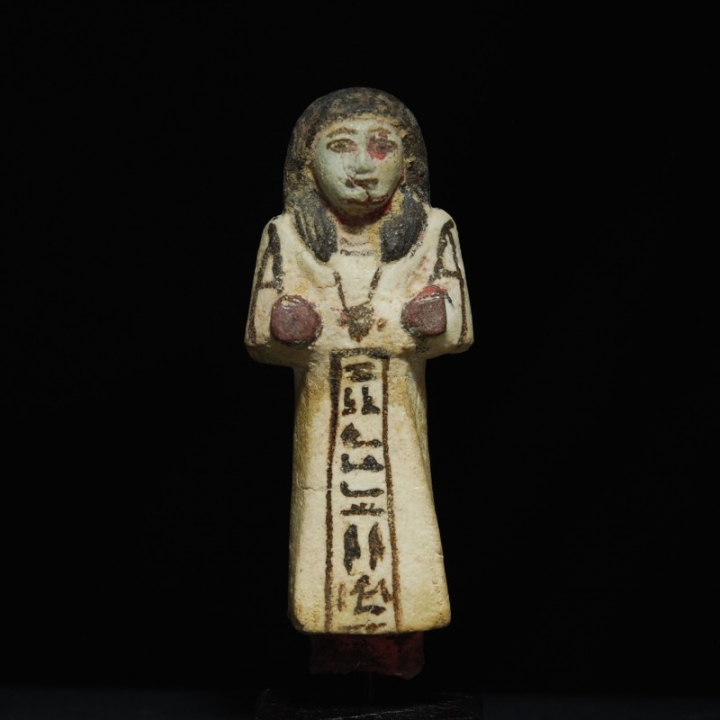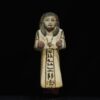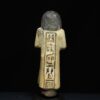Ushabti in the Costume of the Living
Culture: Egyptian
Period: New Kingdom, 19th Dynasty – 1202-1186 B.C.
Material: White Faience
Dimensions: 13.5 cm high
Price: Sold
Ref: 1053
Provenance: Belgian art market, thence English private collection until 2012.
Condition: Feet missing, otherwise fine work in fantastic condition.
Description: Ushabti of white faience with abundant, wonderfully preserved color. The inscription indicates that this ushabti is attributed to the “Ruler and Adminstrator of the Ptah Temple in Memphis” named Hui. The long, sticking out dress is considered to be the costume of the living, the figure holding in its hands the obligatory equipment for fieldwork, painted on with black glaze. Recognizable are also a necklace (with a heart amulet?). Face and hands were painted with dark red color, remains are still clearly visible.
A black inscription line from the chest downwards in the front and from the neck downwards on the back reveals – as mentioned above- the name and title. Especially since the New Kingdom ushabtis were given to the deceased into their graves. Ushabtis were often inscribed with the name of the deceased to be able to act as the representative and to answer when being called by the name during the divine tribunal.





